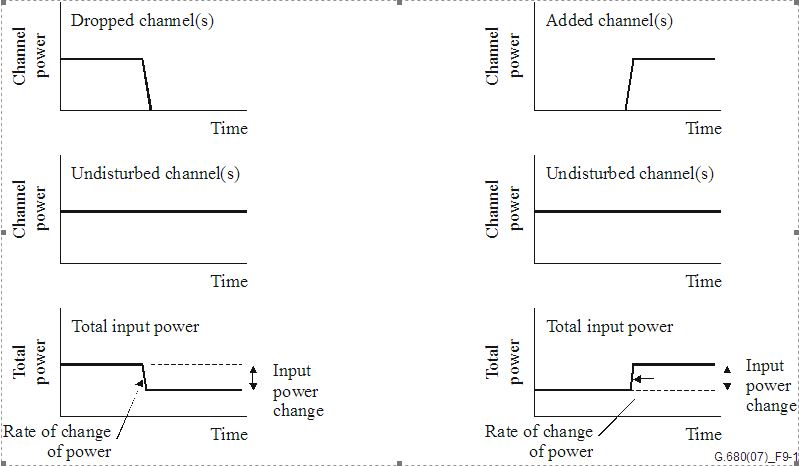Power Change during add/remove of channels on filters
The power change can be quantified as the ratio between the number of channels at the reference point after the channels are added or dropped and the number of channels at that reference point previously. We can consider composite power here and each channel at same optical power in dBm.
So whenever we add or delete number of channels from a MUX/DEMUX/FILTER/WSS following equations define the new changed power.
For the case when channels are added (as illustrated on the right side of Figure 1 ):


where:
A is the number of added channels
U is the number of undisturbed channels
For the case when channels are dropped (as illustrated on the left side of Figure 1):

where:
D is the number of dropped channels
U is the number of undisturbed channels


Figure 1
For example:
– adding 7 channels with one channel undisturbed gives a power change of +9 dB;
– dropping 7 channels with one channel undisturbed gives a power change of –9 dB;
– adding 31 channels with one channel undisturbed gives a power change of +15 dB;
– dropping 31 channels with one channel undisturbed gives a power change of –15 dB;
refer ITU-T G.680 for further study.
Unlock Premium Content
Join over 400K+ optical network professionals worldwide. Access premium courses, advanced engineering tools, and exclusive industry insights.
Already have an account? Log in here




